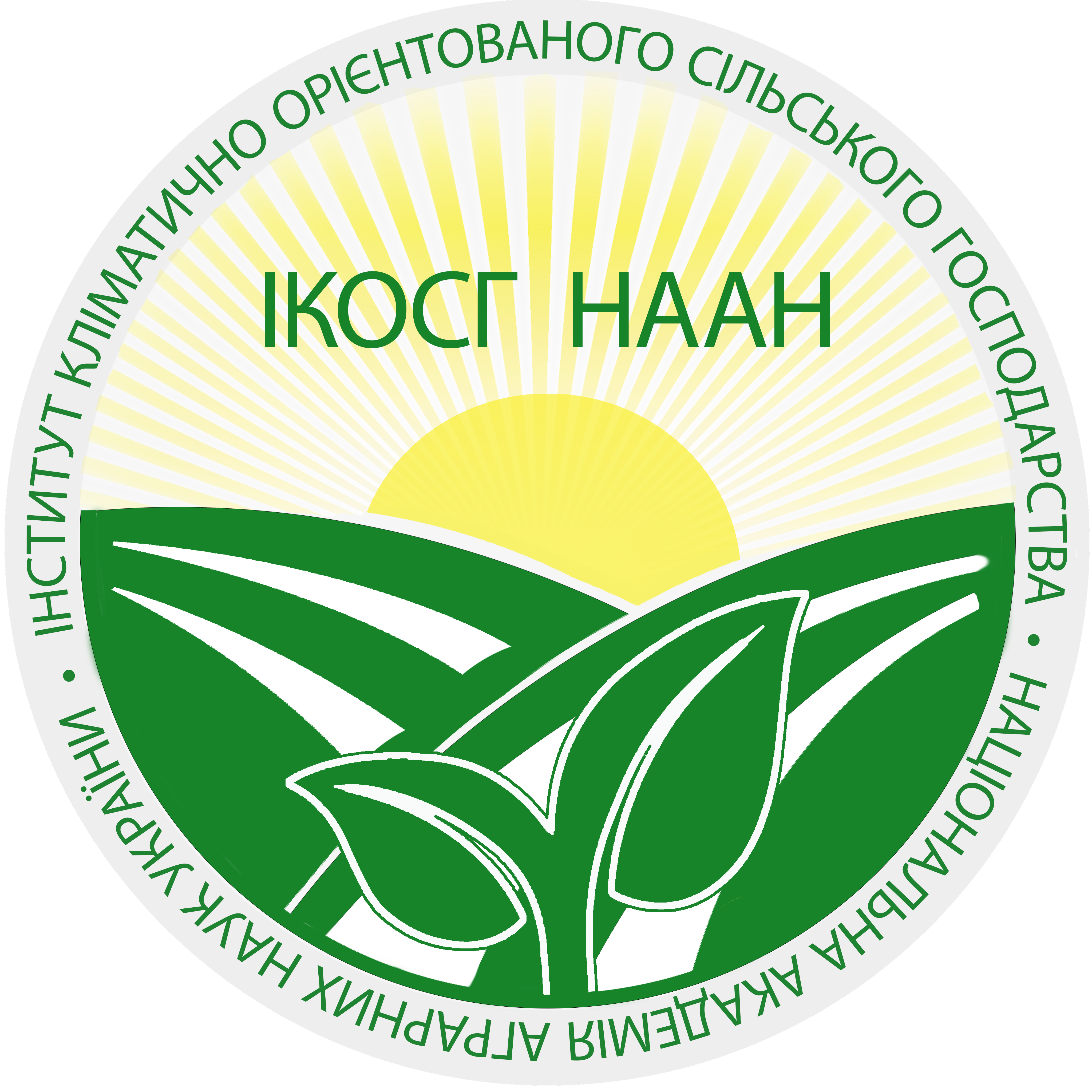ГОСПОДАРСЬКИЙ ВИНОС ПШЕНИЦЕЮ ТВЕРДОЮ ОЗИМОЮ І БАЛАНС ОСНОВНИХ ЕЛЕМЕНТІВ ЖИВЛЕННЯ ЗА ТРИВАЛОГО ЗАСТОСУВАННЯ МІНЕРАЛЬНИХ ДОБРИВ
Анотація
Мета. Визначити господарський винос і баланс основних елементів живлення пшеницею твердою озимою за тривалого застосування мінеральних добрив. Методи. Польовий, лабораторний, розрахунково-порівняльний, аналізування, статистичний. Результати. із урожаєм зерна виноситься значно більше азоту (84,6–135,0 кг/га), ніж фосфору й калію разом узятих – відповідно 26,4–41,5 і 19,5–28,5 кг/га. Судячи з парних комбінацій основних елементів живлення, внесення азотних добрив підвищує винесення азоту зерном на 49 %, тоді як фосфору – на 32, а калію – на 28 %. При цьому застосування фосфорних добрив підвищувало винесення фосфору зерном на 22 %, а азоту й калію – на 8 %. З урожаєм соломи пшениця озима виносить більше калію, порівняно з азотом і фосфором. За внесення повного мінерального добрива (варіант N150P60K80) винесення азоту, фосфору й калію відповідно зростало порівняно з неудобреними ділянками відповідно на 72 %; 41 і 95 %. Це свідчить про те, що рослини пшениці твердої озимої ефективніше розподіляють фосфор між зерном і соломою, порівняно з азотом і калієм. На господарське винесення азоту найбільше впливало застосування азотних добрив у дозі 150 кг/га д. р., підвищуючи його на 53,8–72,0 кг/га, тоді як фосфорних (Р30–60) – на 9,6–15,3 і калійних добрив (К40–80) – на 2,2–5,6 кг/га залежно від варіанту досліду. Азотні добрива сприяли також підвищенню господарського винесення фосфору на 9,1–11,3 кг/га і калію – на 17,6–23,6 кг/га залежно від варіанту досліду. Проведені розрахунки показали, що солома пшениці твердої озимої є важливим джерелом у формуванні балансу елементів живлення у ґрунті. за її видалення з поля під час збирання врожаю в усіх варіантах досліду складався від’ємний баланс основних елементів живлення, за виключенням фосфору у варіанті досліду Р60К80, де він був додатним (+ 6,6 кг/га Р2О5). Висновки. На господарське винесення азоту пшеницею твердою озимою найбільше впливає застосування азотних добрив у дозі 150 кг/га д. р., підвищуючи його на 53,8–72,0 кг/га, тоді як фосфорних (Р30–60) – на 9,6–15,3 і калійних добрив (К40–80) – на 2,2–5,6 кг/га залежно від варіанту досліду. Азотні добрива сприяють також підвищенню винесення фосфору на 9,1–11,3 кг/га і калію – на 17,6–23,6 кг/га залежно від варіанту досліду. За умови залишення врожаю соломи пшениці твердої озимої на полі на добриво і внесення азотних добрив у дозі 150 кг/га д. р. баланс азоту складається додатним – +15,0…28,4 кг/га залежно від варіанту досліду. Додатний баланс фосфору з показником +18,5 кг/га у варіанті досліду N150P60K80 забезпечує внесення фосфорних добриву дозі 60 кг/га д. р., тоді як калію – + 12,8 кг/га у варіанті N150P60K40.
Посилання
3. Любич В. В. Хлібопекарські властивості зерна сортів пшениці озимої залежно від видів, норм і строків застосування азотних добрив. Вісник Дніпропетровського ДАЕУ. 2017. № 2. С. 35–41.
4. Заришняк А. С., Цвей Я. П., Іваніна В. В. Оптимізація удобрення та родючості ґрунту в сівозмінах. Київ : Аграрна наука, 2015. 207 с.
5. Любич В. В., Полянецька І. О., Возіян В. В. Енергетична оцінка зерна пшениці спельти залежно від сорту. Корми і кормовиробництво. 2015. № 81. С. 116–120.
6. Любич В. В. Продуктивність сортів і ліній пшениць залежно від абіотичних і біотичних чинників. Вісник аграрної науки Причорномор’я. 2017. Вип. 95. С. 146–161.
7. Gadaleta A., Lacolla G., Giove S.L., Fortunato S., Nigro D., Mastro M.A., De Corato U., Caranfa D., Cucci G., de Pinto M.C., et al. Durum Wheat Response to Organic and Mineral Fertilization with Application of Different Levels and Types of Phosphorus-Based Fertilizers. Agronomy. 2022. Vol. 12(8). 1861.
8. Любич В. В., Новак Л. Л., Возіян В. В. Технологічні властивості зерна тритикале озимого залежно від норм азотних добрив. Збірник Уманського НУС. 2018. Вип. 92. С. 119–125.
9. Arregui L.M., Lasa B., Lafarga A., Iraneta I. Baroja, E., Quemada M. Evolution of chlorophyll meters as tools for N fertilization in winter wheat under humid Mediterranean conditions. Eur. J. Agromony. 2006. Vol. 24. Р. 140–148.
10. Mahjourimajd S., Taylor J., Sznajder B., Timmins A., Shahinnia F., Rengel Z., Khabas-Saberi H., Kuchel H., Okamoto M., Langridge P. Genetic basis for Variation in Wheat Grain Yield in Response to Varying Nitrogen Application. PLoS ONE. 2016. Vol. 11. e0159374.
11. Almaliev M., Kostadinova S., Panayotova G. Effect of fertilizing systems on the phosphorus efficiency indicators at durum wheat. Agric. For. 2014. Vol. 60. Р. 127–134.
12. Патика В. П., Карпенко В. П., Любич В. В. Азотовмісні сполуки у зерні різних сортів і ліній пшениці спельти. Вісник аграрної науки. 2018. № 8. С. 17–23. 13. Любич В. В. Технологічні параметри виробництва зерна тритикале ярого, вирощеного за різних доз азотних добрив. Вісник Уманського НУС. 2023. № 2. С. 74–82.
14. Любич В. В. Вплив абіотичних та біотичних чинників на продуктивність сортів і ліній пшениці спельти. Вісник Полтавської ДАА. 2017. № 3. С. 18–24. 15. Любич В. В., Невлад В. І., Мартинюк А. Т. Продуктивність тритикале ярого за різних доз азотних добрив. Агробіологія. 2022. № 1. С. 152–159. 16. Господаренко Г. М. Система застосування добрив. Київ : ТОВ «ТРОПЕА», 2022. 376 с.






